Subscribe to my blog
Make your life easier - my blog posts delivered directly to your inbox.
Hawker-Overend Fishing
Dee Farm is a beautiful pool on the upper beat of the Welsh Dee at Llangollen and a great fly fishing location for grayling, brown trout, sea trout, and salmon. In addition to its charm, fly fishing is possible at river levels from 0.45m to 0.8m (Corwen gauge).
Furthermore, for anglers who are not keen on wading the Welsh Dee, fly fishing from the bank is productive and relatively easy.
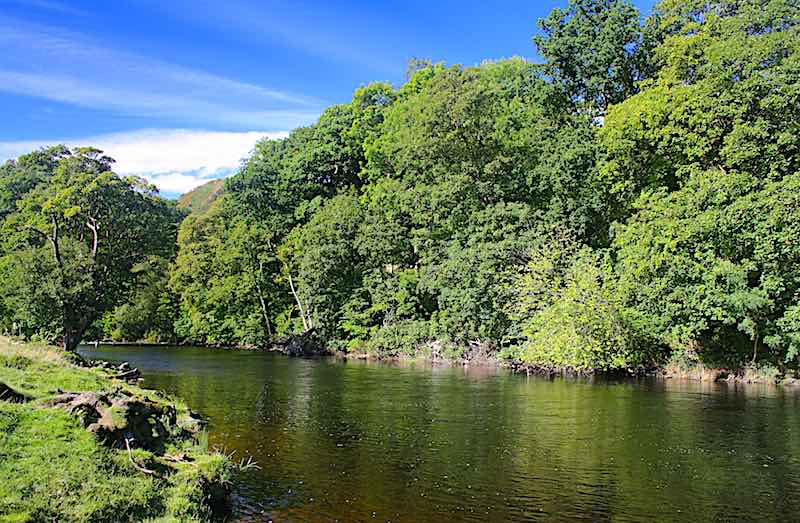
After parking in the top car park, walk up the lane 100m and climb over the stile on your right. Follow the left edge of the field down to the Welsh Dee (brown line marked on the map), turn left and walk upriver through four fields to reach Dee farm which is marked in red.
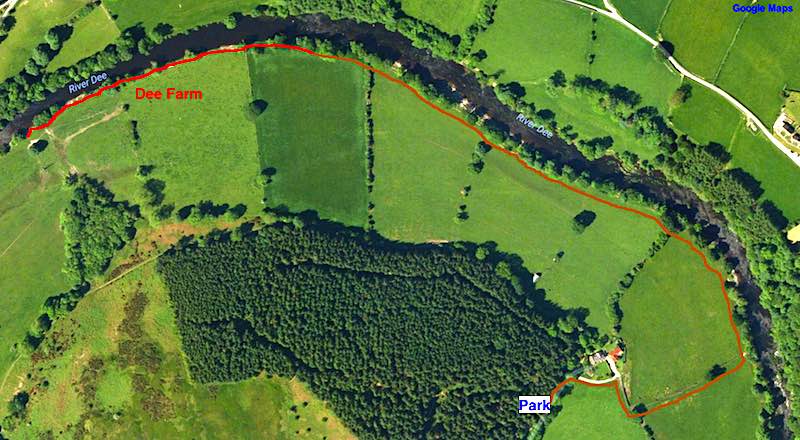
I’ve had some great catches of grayling and trout fly fishing on Dee Farm. Especially after a spate, when the Welsh Dee has dropped below 0.65m (Corwen gauge).
This pool is attractive to anglers who don’t like wading on the Welsh Dee because all the pool can be fished from the safety of the bank.
To explain how to fly fish this pool, I’ve split it into four sections…
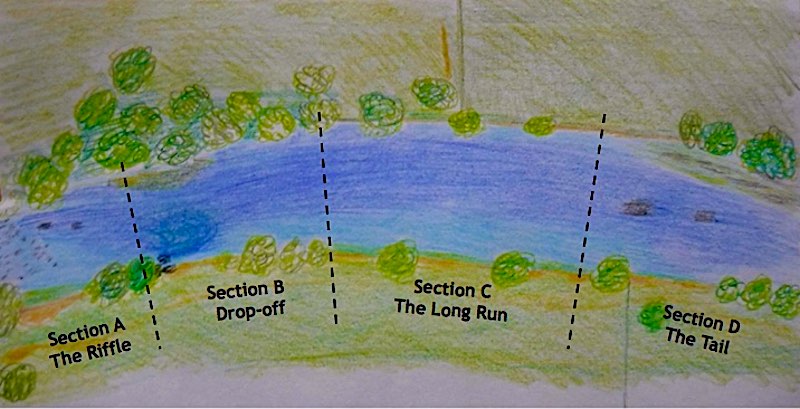
When the Welsh Dee is below 0.6m (Corwen gauge) and running relatively clear, the riffle section of Dee Farm is a great place to fish. All the main fly fishing techniques produce results in this section of the pool.
I find short-line nymphing and wet fly fishing techniques yield more fish because it’s very difficult to eliminate line drag when dry fly fishing and the riffle.
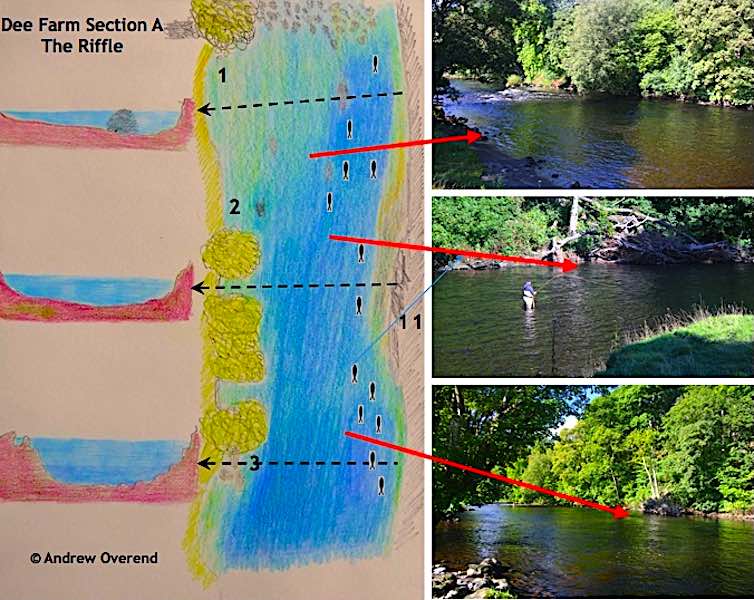
In the riffle section of the Dee Farm trout and grayling are often found lying close to the shelter of the bank.
Point 1, just below the stone wall, is a good place to start fishing from the bank with a team of wet flies or north country spiders.
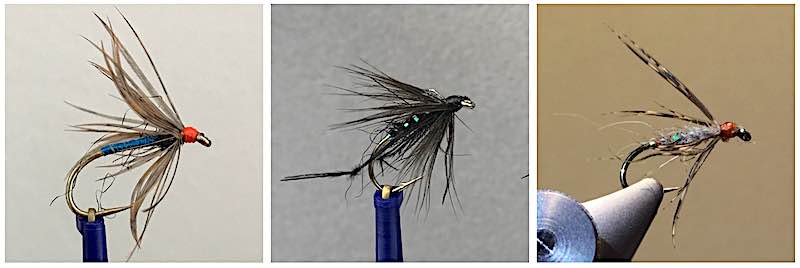
I usually cast the flies upstream at a 45-degree angle and let them dead-drift in the current, mending the line upstream regularly to slow the swing as they come around to the dangle. Often takes come…
immediately after the upstream mend.
It is possible to fish to point 2 without leaving the safety of the bank. However, fly fishing on point 3 involves difficult wade over a boulder-strewn riverbed, even when the river is low.
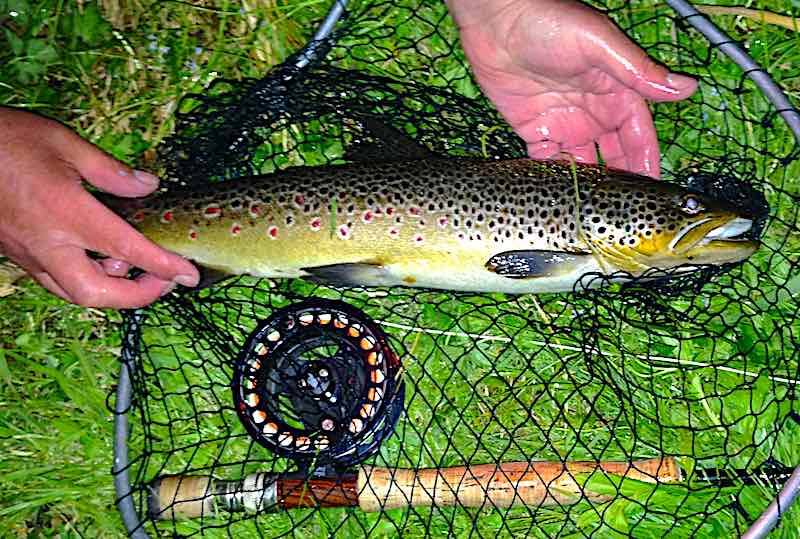
Once that zone has been covered I will go back to point 1, wade out about 3 metres and then cover the water to the far side of the bank. Making sure to focus on the areas where the current is slightly slower due to large submerged boulders and ledges because fish are normally caught in those areas.
If the flow is not too strong, I normally fish my way down under the tree-lined section to point 3 but extreme care is needed because it’s very difficult to wade.
I also use the above approach when fishing this pool with Czech nymphs. Often, nymphs that work best are small (size 16 – 20) drab coloured patterns. To quickly get the small nymphs to the riverbed I use a heavy nymph on the point.
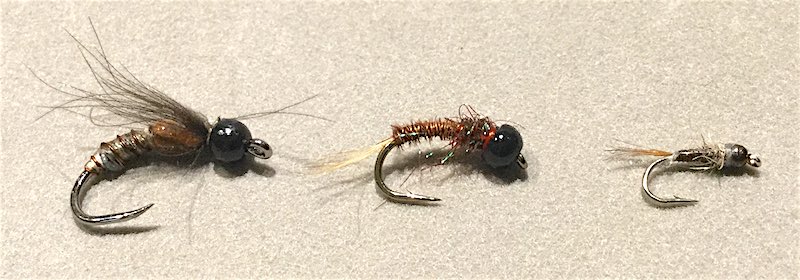

When fishing the dry fly I start at point 2 and fish upriver. Targeting all the pockets of slacker water on my way to the top of the riffle.
Moving downriver you reach the drop-off zone of Dee Farm. This section typically holds some larger trout and grayling. However, they are no easy to catch because they often lie on the far side of the main flow close to the far bank.
Where I normally find the best fish is shown in the following sketch…
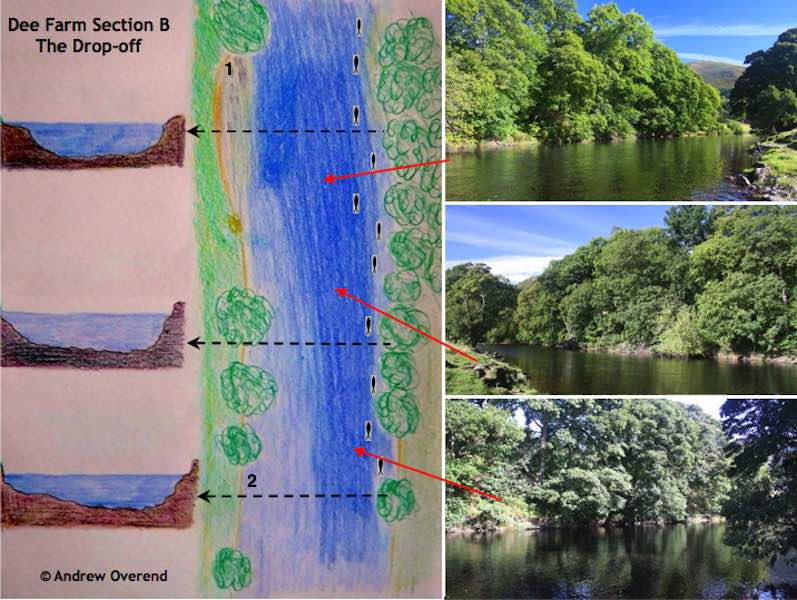
For anglers who don’t wish to wade on the Welsh Dee, this is a good place to fish this pool with the dry fly from the bank. To have the best success here it is essential to approach the pool with stealth from a downstream position because of the high, open bank.
Normally I start at point 2, keeping a low profile, searching out close to the bank with a short line and progressively working through the water to the far bank. Try and avoid casting immediately to rising fish that are close to the far bank because searching the near bank with the dry fly can pick up additional fish. Fish all water to point 1, making sure the drop-off zone is searched fully.
Search the water column closer to the bottom with nymphs in this section of Dee Farm is best done using the “Klink & Dink” method. Fish upstream from point 2 using the same approach taken with the dry fly.
The Klink & Dink (known also as New Zealand or Duo style) is the method of fishing a weighted nymph suspended from a buoyant dry fly. Such as a Klinkhammer or attractor fly.
It’s a very successful method for catching trout and grayling on the Welsh Dee and is my go-to method in conditions when stealth is required. This technique can be used on most types of water, from shallow & fast through to deep & slow. It’s important to fish the flies using a drag-free drift, casting up and across the river or directly upstream in the feeding lanes.

My standard set-up involves tying a length of 4lb fluorocarbon to either the hook bend or a nylon loop at the butt of the Klinkhammer and the nymph to the other end.
The beauty of this method is that there are two chances of catching; attracting rising fish with the dry fly or those feeding on the bottom or taking nymphs in the water column. In addition, if fish are feeding on nymphs closer to the surface they can be targeted by simply shortening the dropper.
Below is a typical Klinkhammer and nymph combinations that I use on the Welsh Dee.

When the run is deep and I want to fish a small (size 16 or less) nymph close to the bottom, I will adjust the standard setup by tying a 12” length of 4lb fluorocarbon to the bend of the heavy nymph and a tie the small nymph to the other end.
The heavy nymph drags the small one down to the fishing zone quickly, which is free to move in the current more naturally. This can make the difference in picking up the larger fish.

Fishing a team of wet flies or spiders is an alternative approach to the aforementioned, and can yield results especially when the fish are taking ascending nymphs just under the surface. With this approach, I normally start at point 1 casing across to the far band and allowing the flies to drift downstream and swing round slowly by the occasional upstream mend.
Search the pool thoroughly because fish can be found throughout but more often closer to the far bank. When sea trout are in the river this approach can also lead to a bonus sea trout especially as evening approaches.
The Long-Run starts at the end of the drop-off zone where the main flow is pushed over towards the far bank. At heights of less than 0.65m, the fish tend to in the 3-metre zone from the far bank, particularly when the water is clear.
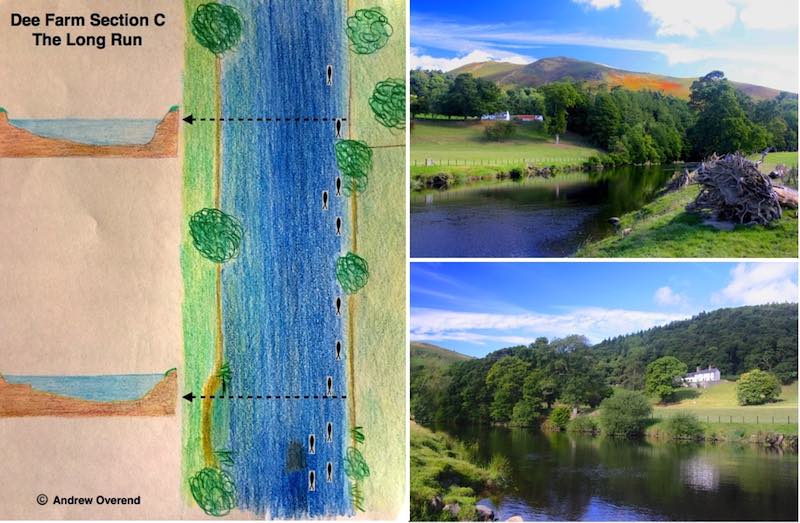
I would normally approach this section of the pool from a downstream position, keeping as low a profile as possible, as not to spook any fish.
Often the best methods are either the Klink & Dink when there is little evidence of surface fly activity or the dry fly if you wish to target rising fish. Fish can be found throughout this section, so it is best to search it fully starting close to the bank and work your way across to the main flow.
Over the years I have found that at normal river levels my best catches have come from early evening to nightfall. In August and September, I have had the few sea trout take the dry fly and even had a couple of salmon on for a few minutes until being snapped.
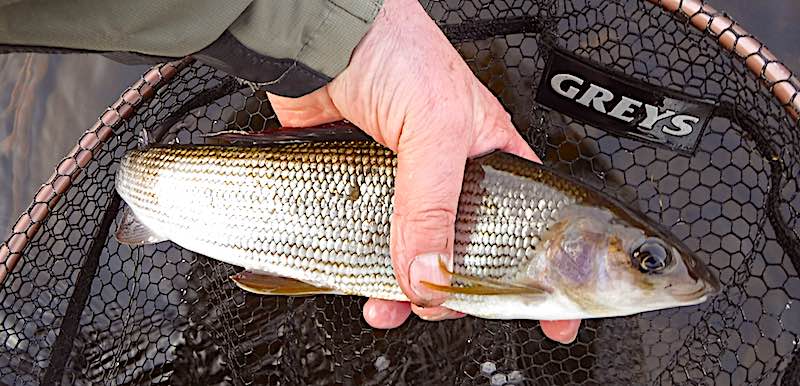
When the Welsh Dee is below 0.6m I have done some deep wading in this section and fished the wet fly and spiders across and downstream. I find this is approach is best done from a couple of hours before sunset onwards and can yield good grayling and trout when the dry fly has failed.
At higher river levels 0.7m, many of the trout and grayling seek shelter from the current in this section of the pool. Under these conditions, it’s best to focus your attention on this section of the river using the Klink and Dink method.
If that doesn’t produce any results then try a team of wet flies on a sink-tip fished down and across; when the water is carrying a little colour I use a 6lb fluorocarbon tippet in the summer months because there is a good chance of hooking a sea trout, especially on overcast days or as evening approaches.
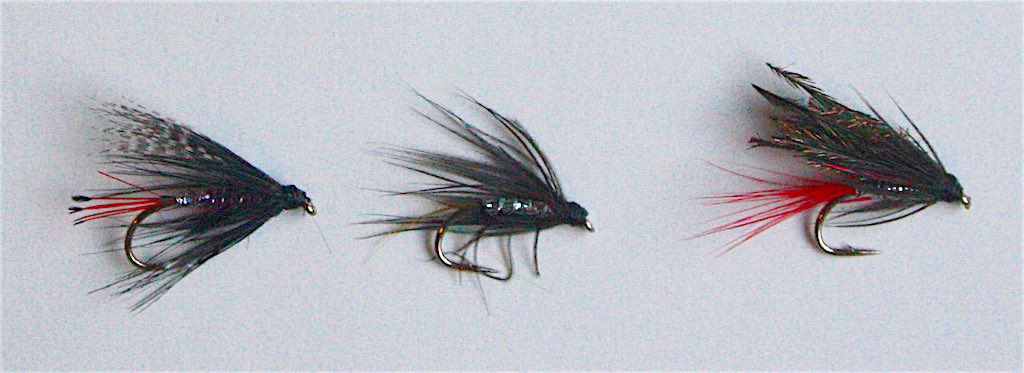
For this article, I have defined the tail of Dee Farm to start just above the fence (position 1) and finish at position 3, in the following sketch. I find the distribution of fish depends strongly on the height of the river.
At river levels, to 0.6m (Corwen gauge) fish tend to be on the far side of the two submerged rocks and close to the far bank as you move towards the end of the tail. When the level exceeds 0.7m, trout and grayling have typically have moved upriver into the long run where the water current is slacker.
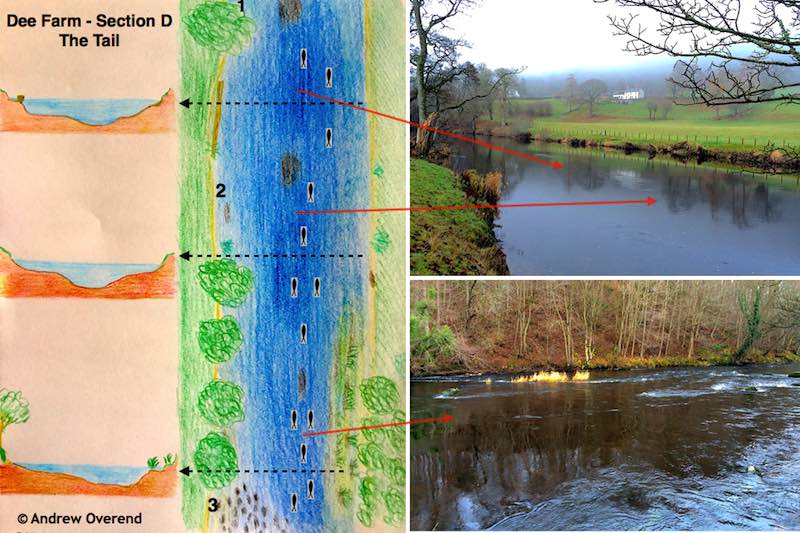
I have a couple of preferred approached to fly fishing the tail depending on the conditions I’m faced with.
When fish are feeding in the V of the tail, I approach them from a downstream position by wading up from the riffle below using either the dry fly for rising fish or the Klink and Dink method when no rises have been seen. Normally, I use a tapered leader that is at least 12ft in length because this area of the tail is shallow and the fish are easily spooked.
At summer levels, I continue to wade up river to point 2, keeping close to the bank, while searching for fish with the dry fly; casting is not easy here because of the overhanging bankside trees and vegetation.

Normally, I fish the section above point 2 with a team of wet flies or spiders by starting at point 1 and working my way downstream. Often trout and grayling are caught on the far side submerged rocks.
To fish the zone close to the far bank I find it necessary to carefully wade out about 15ft and then work my way down to just above the fence but I only do this when the river is close to its summer level of 0.5m (Cowen gauge). If fish are rising picking out the fish with the dry fly is also worth a try.
When the rising fish are close to the far bank it is worth running the dry fly through the water directly in front of you. Because it’s surprising how many times that these fish don’t make their presence felt.
During the day in the height of summer, especially when the sky is bright cloudless, Dee Farm often looks completely void of fish. When the conditions are like that you need to come back at sunset and you will have a very different view!
Largely my approach depends on water/air temperature and river level.
When there is little or no fly activity I typically start with the Klink and Dink method.
Once flies are observed coming off the water I usually switch to dry fishing; if the flies are small I use the double dry approach
In the riffle section wet flies, spiders and nymphs can yield good results.
I find my approach is increasingly governed by the time of day and cloud cover.
Early morning, focus on the head and tail of the pool using the Klink & Dink method.
On bright sunny days, I just fish the riffle at the head with either Klink & Dink, spiders or nymphs.
In the evening, as the light fails, the middle sections of the pool can yield good fish to the dry flies and wets fished close to the surface.
Dee Farm is probably one of the best holding pools for salmon on the Upper Beat because the main flow is sheltered by a tree-lined, steep far bank.
In high water, the slacker water is found close to the right bank in sections C to D, which can be easily fished with the fly.
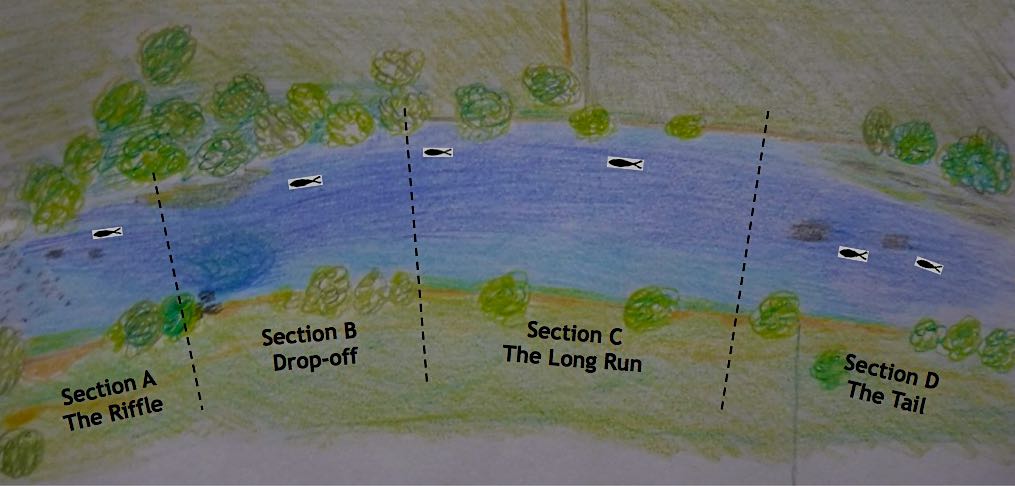
At the start of the season, when it’s still cold, the best approach is to fish a sinking line slowly through the deeper sections of the pool starting just above the drop-off zone (section B) to the tail.
Fish tend to resting in the sheltered sections.
At the start of May, when the weather warms up, tackling the faster sections of the pool with a floating line tipped with a sinking polyleader becomes a better approach.
For fly selection I use this simple strategy:
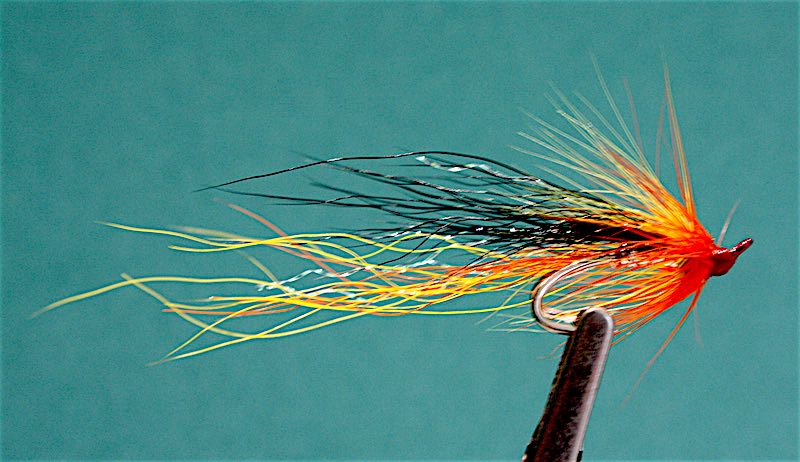
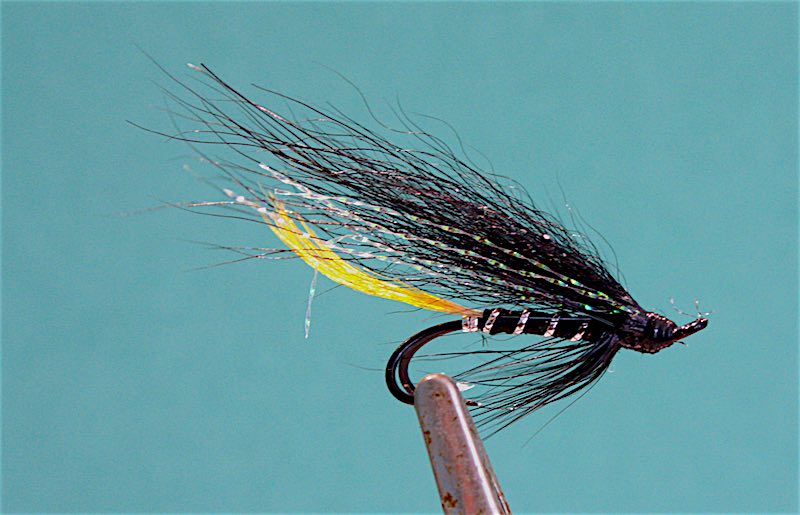
Rather than spending time agonising over which fly to use, I have found it is more important to focus your attention on locating where the salmon are lying on the Welsh Dee and how best to cover them such that they take you’re offering.
In addition, I’m of the opinion that salmon are either interested in taking or not because the majority of salmon I have caught on the Welsh Dee has been on the first run through the pool. As such, I now tend to fish pools quickly and then move on to the next one with the aim of covering as much of the river as possible. A side benefit of this strategy is that you get plenty of exercise, which keeps you fit!!!
In recent years on the Welsh Dee there have been better runs of fish between May and July; probably late spring fish intent on quickly pushing upriver.
I focus my attention on riffle sections when the river has been at its summer level for a week or so and is followed by a small spate; because salmon have to spend a little time navigating their way up into the next pool.
The riffle at the head of Dee Farm is one such place where I will slowly work my way through the drop-off zone. The tail is another place I tend to focus on in the mornings, especially the holes behind the two large submerged boulders.
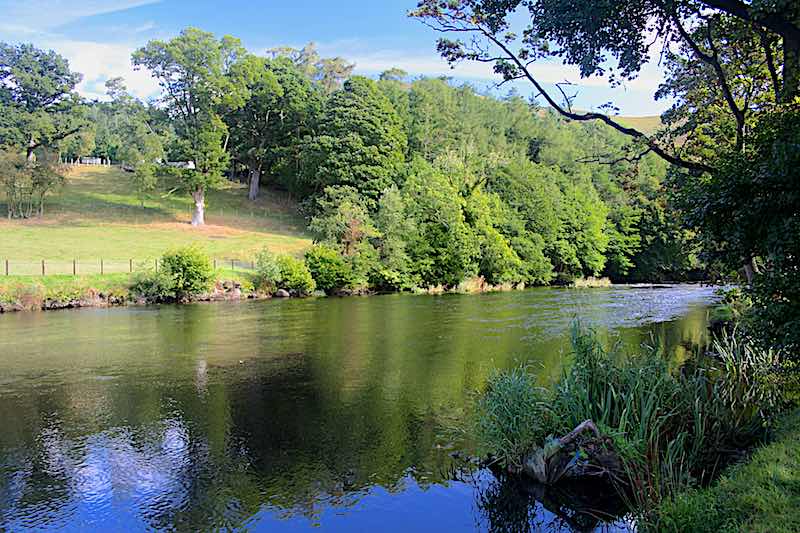
In the last few years, during the summer months, I now prefer flies dressed on single hooks from size 6 down to 10, which are fished on a 10ft 6# reservoir trout rod. My reasoning is that during the summer there are not many salmon in the Welsh Dee and I don’t like carrying extra gear when my focus is on trout and grayling for most of the day.
This approach means I only have to carry an extra small fly box containing a few small salmon flies; allowing me the opportunity to run through likely lies during the last hour before sunset, which is probably the best time to tempt a salmon.
In addition, it keeps me occupied until nightfall and my final switch to target sea trout.
As summer progresses, I generally only fish for salmon during the last hour before sunset using a 10ft reservoir rod sporting a small salmon fly (Stoats Tail) or a team of sea trout flies. This saves carrying the salmon rod when the probability of a salmon is very low.
Last year I had a salmon smash a size 10 silver sedge while fishing for grayling in the evening – it duly broke the 3lb leader.
On the Welsh Dee, most people fish with a floating line and either a tapered leader or a sinking polyleader, focusing their attention on the head and tail of the pool when the river is below 0.7m. At higher levels concentrate on the body of the pool, which you will have to share with the lure anglers.
Below is a short video of a salmon I caught in September fishing the tail of Dee Farm with a red Ally’s Shrimp on a floating line tipped with a sinking polyleader.
In the last couple of years, I have started fishing Dee Farm at night for sea trout and had some good results. The following sketch shows where I have caught sea trout.

Sea trout start to enter the lower reaches of the Welsh Dee in June. These early sea trout tend to be large and are notoriously difficult to catch.
I’m still trying to hook one of these beasts that can be close to double figures in size.
Usually, the main run of Welsh Dee sea trout (1 to 3lb mark) arrives at Llangollen in July with the run peaking in August. When you locate them during these months you can get a few fish on a good evening.
During the peak of the season, when the river is at its summer level (<0.55m Corwen gauge) I find the best approach is to start fishing in the riffle as the light starts to fail.
I usually start with a team of small wet flies (size 14 to 12) on 3lb tapered copolymer leader; e.g. Butcher, Black Hopper, March Brown Spider, Teal Blue & Silver, Black Pennell, Mallard & Claret etc.
Cast the flies squarely across the river, with the aim of getting as close to the overhanging trees on the far bank as possible, and allowing them to drift round in the current. As you move down, and the current slows, add motion to the flies by side flicks of the rod-tip; often takes come immediately afterwards.
Once dark, I increase the breaking strain of the tapered leader (8 – 10lbs) and move to larger flies (size 10 to 8 singles). Then I move down to fish through the rest of the pool to the tail. Hopefully, this produces a fish or two but if it doesn’t then I switch to either:
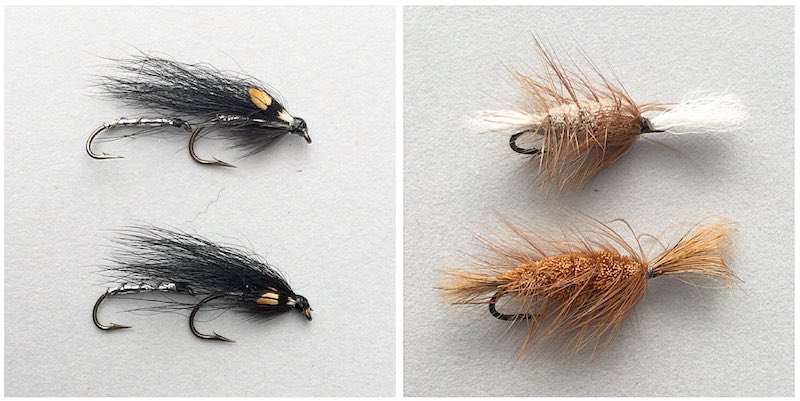
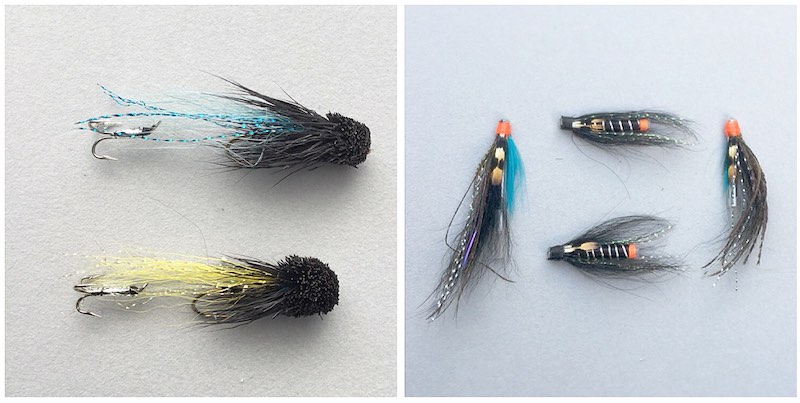
I usually, find that this works if there are any interested fish in the pool. Therefore, if the above doesn’t then move on to another pool.
On dull overcast days, when the Welsh Dee is running off and nearly clear after a summer spate (0.7m and lower Corwen gauge), it is worth searching through the shady sections of the pool with a team of small (size 12 – 10) wet flies/lures (e.g. Silver Butcher, Black Cormorant, Peter Ross etc.); on a floating line tipped with an intermediate polyleader and 5ft of 6lb fluorocarbon.
Cast the flies squarely across the river, with the aim of getting as close to the overhanging trees on the far bank as possible, and then strip them back with short pulls – takes are violent so be prepared to let them take some line otherwise you will be broken. This technique worth trying from section B of Dee Farm to the end of the tail.

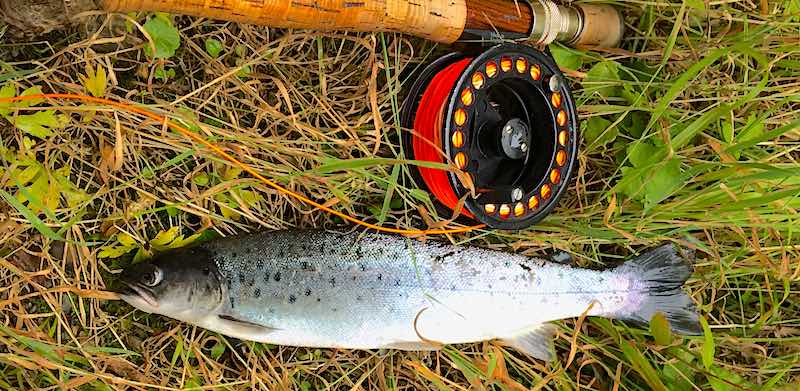
From Llangollen take the A5 to Crown then just after the junction with the B5103 by Berwyn Station take the next right and follow the lane for about 1mile. Near the end of the lane, you will see the top car park on your left.
To reach the Welsh Dee walk up the lane 100m from the car park until you reach the style, just before the farm, then follow the edge of the field on your left down to the river (brown line marked on the map). Then walk up through four fields to reach Dee farm.
[Disclaimer – like most outdoor sports, fishing on the Welsh Dee is not without its hazards. Therefore, you MUST do your own RISK ASSESSMENT before starting to fish on the Welsh Dee; especially if you decide to wade and/or fish at night. In addition, you must follow the club rules when fishing this water.]
Subscribe to my blog
Make your life easier - my blog posts delivered directly to your inbox.